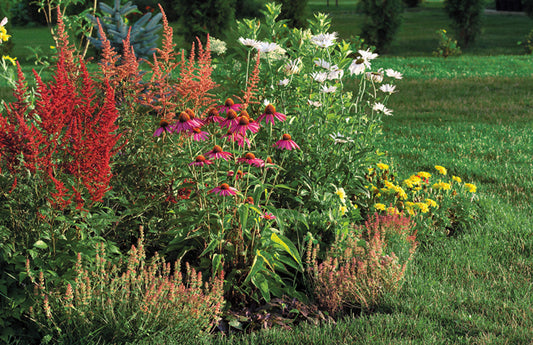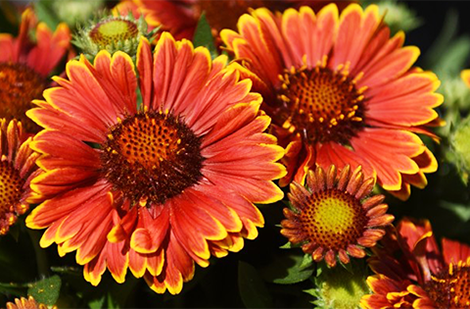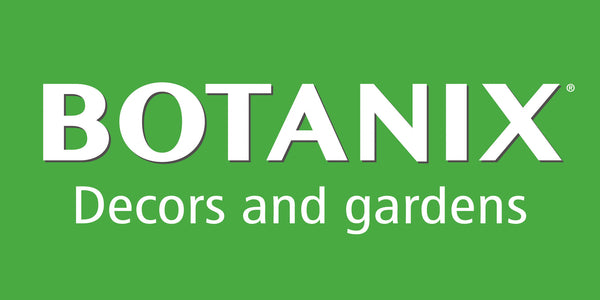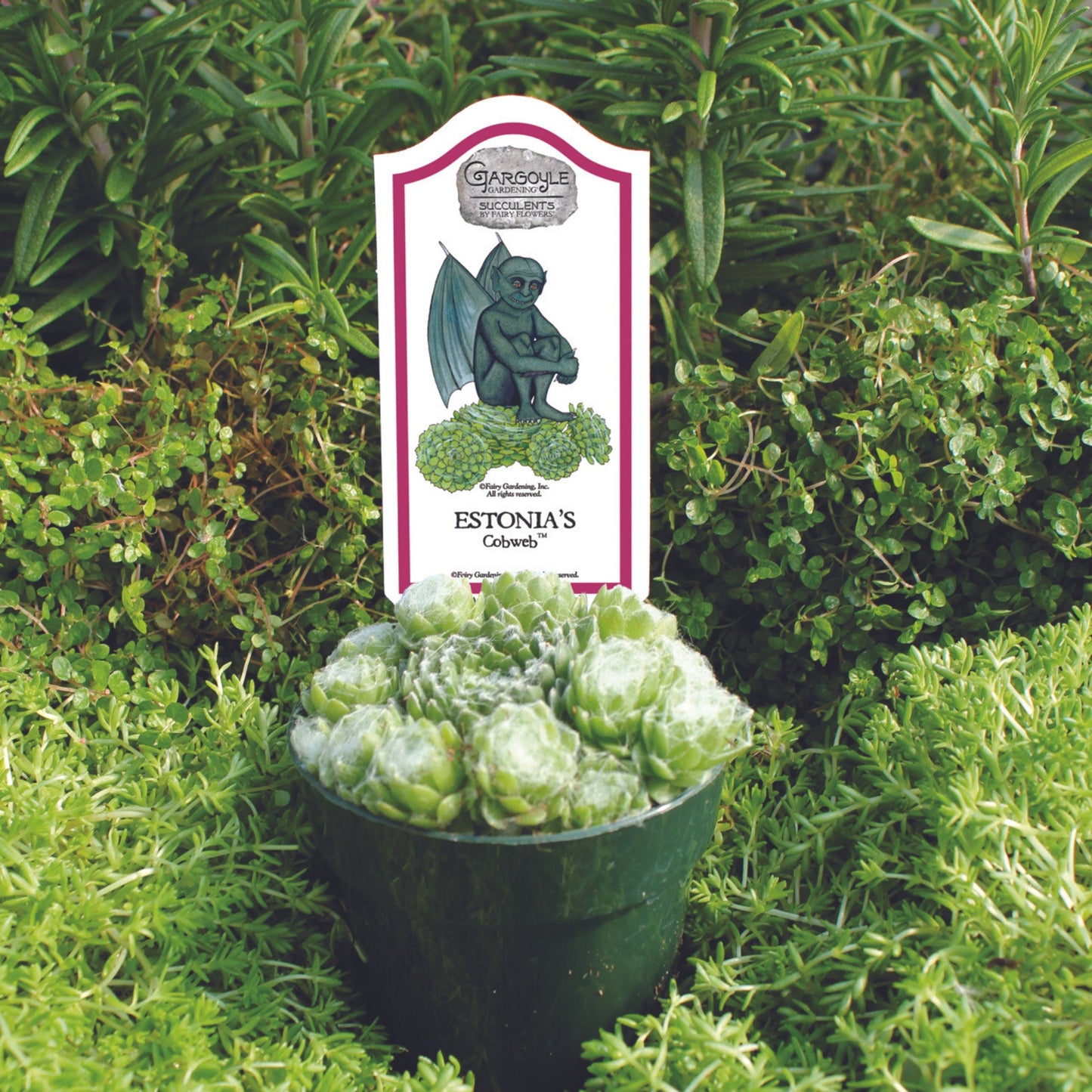Sempervivum spp.
Sempervivum – Hens and Chicks
Sempervivum – Hens and Chicks
Exposure
- Sun
Rusticity
Bloom time
- June
- July
- Drought resistant
- Attractive rosettes
- Ground-cover
- Easy care
- Dense foliage
Discover Sempervivum, remarkable perennial succulents known for their exceptional resilience and unique architectural form. Appreciated for their ability to thrive in challenging conditions with minimal care, Sempervivums are a fantastic choice for gardeners of all levels looking to add texture and lasting color to sunny spaces. Their name "Sempervivum" means "always living," a testament to their incredible hardiness.
Features
- Foliage: The main characteristic of Hen and Chicks is their evergreen foliage arranged in compact rosettes. The leaves are fleshy and succulent, with colours and textures varying greatly depending on the species and variety, ranging from green to grey-blue, red, purple, or even coppery, often with contrasting tips.
- Bloom: After a few years, a mature rosette produces an upright, often thick, flower stalk bearing star-shaped flowers that are typically pink or yellowish. The mother rosette dies after blooming, but the plant survives thanks to the numerous offsets (new rosettes) produced at its base. Flowering generally occurs in summer.
- Light: Hen and Chicks thrive in full sun. They require at least 6 hours of direct sun per day to maintain a compact shape and vibrant colours.
- Habit: They form clumps of low-spreading rosettes that propagate by producing offsets around the main rosette.
- Growth: Growth occurs through the expansion of existing rosettes and the production of new small rosettes (offsets) that root around the mother plant.
- Moisture: Their succulent nature gives them excellent drought tolerance. Excess moisture, especially combined with cold, is their main enemy. Impeccable drainage is therefore essential.
- Soil: Soil must be extremely well-drained and preferably poor or of low to average fertility. They tolerate rocky or sandy soils and dislike heavy or clay soils that retain moisture.
- Temperature: Hen and Chicks are among the hardiest succulents. Most species and cultivars are hardy in zones 3 to 8, making them perfectly suited to harsh Quebec winters.
- Watering: Water sparingly. Let the soil dry out completely between waterings. They require virtually no watering in fall and winter, especially if planted in the ground.
Uses
- Types of Use: Ideal for rock gardens, green roofs, dry stone walls, crevices between pavers, containers (pots, troughs, planters), and as groundcover in dry, sunny locations. They are perfect for difficult areas where soil is shallow or dry.
- Decorative Features: Their geometric rosette shapes and varied colours offer constant visual appeal throughout the year. They add texture and architectural interest to the landscape.
Care
- Fertilizing: Generally, no fertilization is needed and can even harm their hardiness and compact shape. If the soil is extremely poor, a light application in spring can be done.
- Pruning: The only maintenance required is to remove faded flower stalks after blooming and clean up dead rosettes. This allows new rosettes to develop better.
Planting
- Spacing: Spacing depends on the desired effect. For a dense mat quickly, space rosettes about 10 to 15 cm (4 to 6 inches) apart. To let plants spread naturally, wider spacing is possible.
- Depth: Plant so the base of the rosette is at soil level or slightly above, ensuring good root contact with well-drained soil.
- When to Plant: Spring and early fall are the ideal times for planting Hen and Chicks.
Plant details
Dimensions
Dimensions
Characteristics
Characteristics
Habit:
- Low
- Bushy
- Spreading
Flowering colours:
- White
- Pink
- Red
Plant needs
Plant needs
Watering:
- Low watering
Maintenance:
- Easy. Do not overwater. Can be divided to propagate the plant or prune spent flower stems to encourage the growth of new rosettes.
Soil requirement:
- Well-drained soil
- Dry
Features
Features
Resistance:
- Pests
- Heat
- Drought
Attract:
- Pollinators
Use:
- Ground cover
- Rock gardens
Attribute:
- Resistant to heat and drought
Related articles
-

Perennials for all occasions
Read the articleOsez créer des associations inédites qui sauront refléter votre personnalité, même si pour cela vous deviez déplacer certaines vivaces pour mieux les mettre en valeur.
-

Landscaping with perennials
Read the articleVariétés à découvrir, la tomate se savoure crue, en sandwich, en bruschetta ou en salade. Cuite, c'est l'ingrédient de base de sauces, soupes et salsas.
-

Perennials proper maintenance: cut and fertilize
Read the articleLa grande popularité des vivaces vient du fait qu'après avoir été oubliées pendant des mois au cours de l'hiver, elles réapparaissent sur la scène plus énergiques et surprenantes que par...
-

How to plant perennials in your garden
Read the articleEn pénétrant au jardin, ce sont souvent les plantes vivaces que l’on remarque en premier. Un massif de sauges, d’hémérocalles, d’astilbes, d’échinacées ou de lavande offre un spectacle d’une beauté...
















